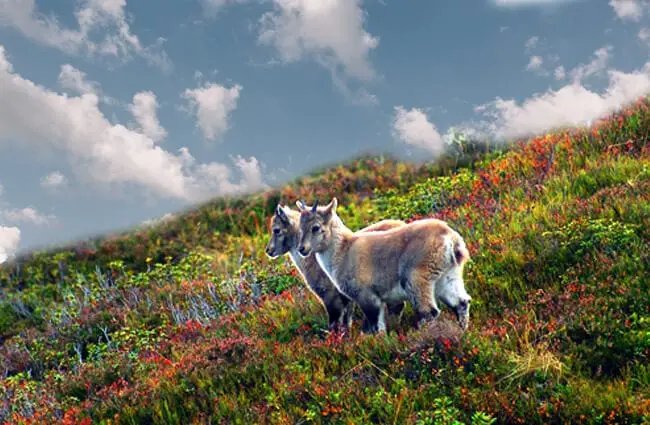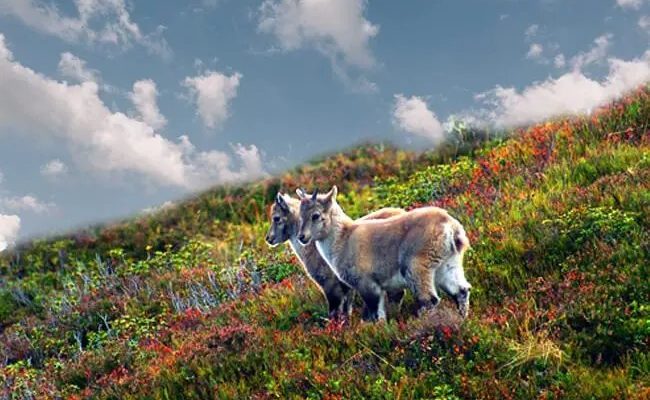
The ibex family is comprised of several species, primarily found in Europe, Asia, and North Africa. They’re well known for their impressive curved horns and incredible climbing abilities. But how did they evolve into the agile mountain goats we see today? Understanding the evolutionary journey of the ibex not only sheds light on their survival strategies but also highlights the interconnectedness of life in their mountainous habitats. So grab a coffee, and let’s dive into the intriguing timeline of the ibex!
Early Ancestors of the Ibex
To understand the evolution of the ibex, we need to hop back millions of years to when their ancestors roamed the earth. The earliest relatives of the ibex are thought to belong to the family Bovidae, which includes a variety of hoofed animals like antelopes and sheep. This family emerged around 20 million years ago, during the Miocene epoch, when modern ecosystems started forming.
The evolutionary journey of the ibex likely began in the Himalayan region. Fossil evidence suggests that these ancestors were well adapted to varying climates and terrains. Over time, they gradually developed features suited to navigate rocky landscapes, like sturdy limbs and strong hooves. You might be wondering how these changes occurred—well, it’s all about natural selection! Those that could thrive in tough conditions were more likely to survive and reproduce, passing on their traits to future generations.
As we moved into the Pleistocene epoch, about 2.6 million years ago, many species were adapting to colder climates. This is when the ancestors of modern ibex began to diverge from others in the Bovidae family. They started developing their signature traits, such as impressive horns and a more robust body structure. These adaptations were crucial for survival in mountainous regions where food was scarce.
The Rise of the Ibex Species
Fast forward to today, and we see several species of ibex, each adapted to specific environments. The most recognized among them include the Alpine ibex and the Nubian ibex. Each species has its unique adaptations, making them incredibly fascinating in their own right.
The Alpine ibex, for instance, is known for its magnificent curved horns that can grow up to 1 meter long. These horns serve multiple purposes: they’re used for defense against predators and during mating displays. Its thick coat helps it withstand harsh winter conditions, while specially adapted hooves offer exceptional grip on steep surfaces. Picture a mountain goat effortlessly leaping from one rock to another—that’s the Alpine ibex in action!
On the other hand, the Nubian ibex thrives in the arid climates of the Middle East and North Africa. Unlike its Alpine counterpart, it has a shorter, lighter body built for navigating rocky deserts. Its ability to find water sources and forage in dry conditions demonstrates the incredible adaptability of the ibex family. Through such variations, we see the beauty of evolution at work—nature crafting unique solutions for survival.
Adaptations for Survival
Ibexes are nothing short of survival experts. Living in rugged terrains presents numerous challenges, and these animals have evolved several remarkable adaptations to thrive. Their specialized hooves are one of the key features that support their extraordinary climbing abilities. Each hoof has a hard outer shell and a soft inner pad, providing the perfect balance of grip and agility on rocky surfaces.
When observing how ibexes navigate steep cliffs, it’s like watching a well-choreographed dance. They use their strong limbs and impressive balance to leap between ledges, often performing acrobatic feats that leave spectators in awe. This ability not only helps them escape predators but also allows them to access food sources that other animals can’t reach.
Another fascinating adaptation is their social structure. Ibexes often live in groups called herds, which provide safety in numbers. By sticking together, they can help each other spot potential dangers and share knowledge about food sources. For example, older, more experienced ibexes often lead the way, teaching younger members the best pathways through their mountainous habitats.
Threats and Conservation Efforts
Despite their incredible adaptations, ibexes face numerous threats today. Habitat loss, poaching, and climate change are all significant challenges affecting their populations. With urbanization and human activity encroaching on their natural habitats, many species of ibex are at risk of declining numbers.
Conservation efforts have been put in place to protect these magnificent animals. In various regions, national parks and protected areas have been established to safeguard their habitats. Additionally, local communities are being educated about the importance of preserving ibex populations. By involving people in conservation efforts, we create a sense of shared responsibility for these unique creatures.
You might also find it interesting that some ibex species have been successfully reintroduced into their natural habitats after being extinct in the wild. The Pyrenean ibex, for example, was declared extinct in 2000, but attempts to revive it through cloning efforts have brought renewed hope. Although the road ahead is challenging, the resilience and adaptability of ibexes serve as a reminder of the power of conservation.
The Cultural Significance of the Ibex
Throughout history, ibexes have held cultural significance in various societies. In many mountain regions, they symbolize strength, agility, and resilience—qualities that people admire. Ancient civilizations often depicted ibexes in art and folklore, showcasing their importance in local cultures.
For example, in Greek mythology, the ibex is often associated with the god Pan, who is a symbol of nature’s wildness. Just like ibexes, Pan represents the untamed beauty of the natural world. Their iconic status in art and storytelling reflects humanity’s fascination with these agile animals and their impressive adaptations to life in steep, rocky terrains.
Even today, the sight of an ibex can inspire awe and respect. Wildlife enthusiasts and tourists flock to mountainous regions hoping to catch a glimpse of these magnificent creatures in their natural habitats. By appreciating their place in both nature and culture, we foster a deeper understanding of the importance of conserving these iconic animals.
The Future of the Ibex
Looking ahead, the future of the ibex is in our hands. While they have shown remarkable resilience over millions of years, the changing climate and human activity present significant challenges. Continued conservation efforts are vital to ensure that future generations can enjoy the beauty of ibexes in the wild.
Innovative approaches like habitat restoration, wildlife corridors, and community-based conservation will play a critical role. By working together, we can protect the delicate balance of mountain ecosystems, allowing ibexes to thrive alongside other wildlife.
You might feel a sense of responsibility to contribute. Learning about the challenges they face and supporting conservation organizations can make a real difference. Every little effort counts when it comes to ensuring the survival of this extraordinary species.
As we wrap up this exploration of the evolutionary history of the ibex, we realize that these magnificent animals are not just survivors; they are symbols of adaptability and resilience. Their incredible journey through time reminds us of the delicate balance of nature and the importance of understanding and protecting the world around us.

